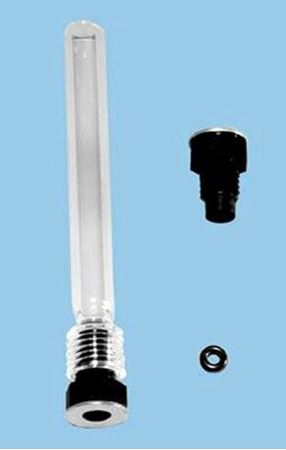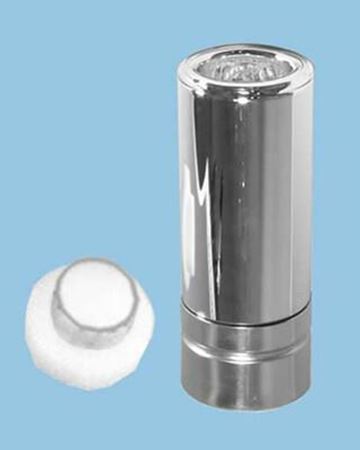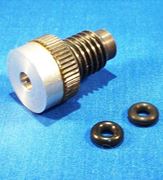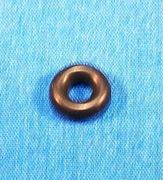Tip-Off NMR Sample Tubes
TIP-OFF SEALING SYSTEMS APPLICATION NOTES
Flame-Sealing NMR Sample Tubes:
There are two basic ways to prepare flame-sealed samples. One method, suitable for both Pyrex and non-Pyrex tubes, is to use a “vacuum adapter” to attach the tube to the vacuum line via a hose or other mechanical means. Sample tubes are held in place by an o-ring compressed finger tight by a threaded bushing.
The second way, for Pyrex tubes only, starts with “flame-sealing the sample tube” to the port on the vacuum line. Although more difficult to attain a good seal, this method ensures the integrity of the sample system and allows for vacuum transfers under very controlled conditions. Many researchers, adept at glassblowing, prefer this method.
Flame-Sealing Techniques:
Hand-held micro torches (available from major lab supply dealers) provide a small, yet very hot, flame to easily seal tubes. A very uniform, concentric seal is important to maintain good spinning quality. The way to accomplish this is by heating the glass evenly around the tube. The best seals are made with pre-constricted tubes. Increased glass thickness in the seal area reduces the chance of the hot glass imploding due to the vacuum in the tube. It is important that only the seal area be heated. Finally, the key to making good seals is practice.
Freeze / Thaw Degassing:
This method is often used to remove oxygen from samples. However, with aqueous samples, it can be difficult to complete the process without breaking the tube. One effective technique is as follows: Once the sample is loaded and the tube is secured under vacuum, immerse the tube into the freezing medium (liquid N2, dry ice/alcohol) very slowly so that the sample freezes from the bottom, up. Likewise, in the thaw cycle, remove the tube very slowly so that the sample melts from the top down. The use of a small cylindrical lab dewar and a lab jack greatly aid in this process. Some practice is recommended before valuable samples are used.

Both Pyrex and non-Pyrex tubes are offered. Pyrex tubes are necessary if you need to reopen the tube and do additional glassblowing. The non-Pyrex tubes are ideal for samples that will be archived. In both cases, a 50mm section of 5mm OD tubing is sealed to a 7-inch sample tube. The extra tubing allows the tube to be secured in the Tip-Off Adapter with ample length for safe flame sealing. A uniform constriction, with a 2mm ID, is placed just above the 7-inch length.
NE-253-B
Bushing, Nylon with heat shield and two O-rings, Specialty NMR Sample Tubes, Tip-Off NMR Sample Tubes, Tip-Off Adapter with Vacuum Valve
NE-253-O
O-ring, FETFE, extra thick, Specialty NMR Sample Tubes, Tip-Off NMR Sample Tubes, Tip-Off Adapter with Vacuum Valve
NE-253-G
Glass Body only, Specialty NMR Sample Tubes, Tip-Off NMR Sample Tubes, Tip-Off Adapter with Vacuum Valve
NE-253-P
Teflon Plug, with Teflon-clad O-rings and knob only, Specialty NMR Sample Tubes, Tip-Off NMR Sample Tubes, Tip-Off Adapter with Vacuum Valve
NE-8348
Cap, Dewar, Styrofoam, Specialty NMR Sample Tubes, Tip-Off NMR Sample Tubes, Tip-Off Dewar and Cap
with vent slot, greatly reduces boil-off








